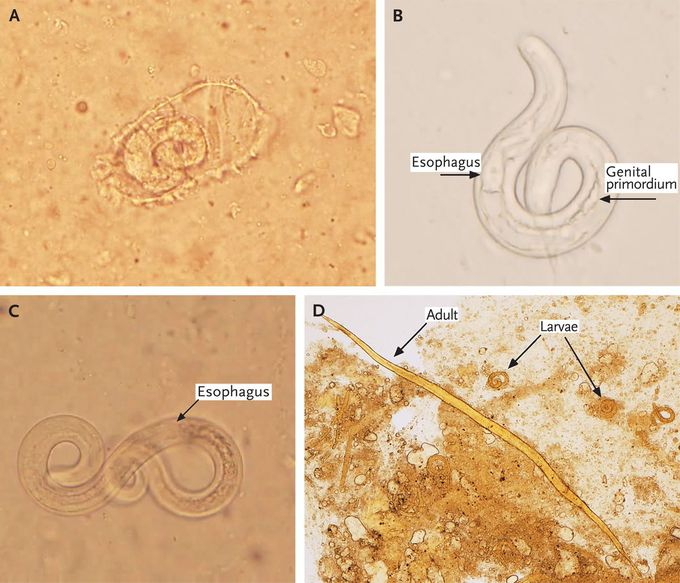


Strongyloides stercoralis Embryonated Ova in the Lung
A 65-year-old Vietnamese immigrant was hospitalized for persistent abdominal pain and malodorous black stools. He was being treated with glucocorticoids for giant-cell arteritis. Endoscopic examination showed duodenal ulceration with duodenitis. The patient's hospital course was complicated by several episodes of bacteremia with enteric organisms. Increased respiratory effort required endotracheal intubation. Subsequently, the microbiology laboratory incidentally discovered numerous larvae and several embryonated ova with moving larvae in a tracheal aspirate sample. The structures were identified as Strongyloides stercoralis ova (Panel A) and rhabditoid (Panel B) and filariform (Panel C) larvae. In subsequent stool samples, numerous rhabditoid larvae as well as a few adult forms (Panel D) were present. Strongyloides may persist for many years after initial acquisition because of low-level autoinfection. This can transform into a hyperinfection syndrome, in which widely disseminated larvae cause multiorgan disease, especially in patients with immunosuppression such as that associated with the use of glucocorticoids. Bacteremia with enteric gram-negative organisms may occur as well, associated with migration of worms through the intestinal wall. Rarely, ovum-producing adults may be found in the lung. Since hyperinfection is associated with a high mortality, it is critical to screen for this parasite in patients from areas where it is endemic before the initiation of immunosuppression. Despite treatment of the infection, the patient died from complications associated with the hyperinfection syndrome.

